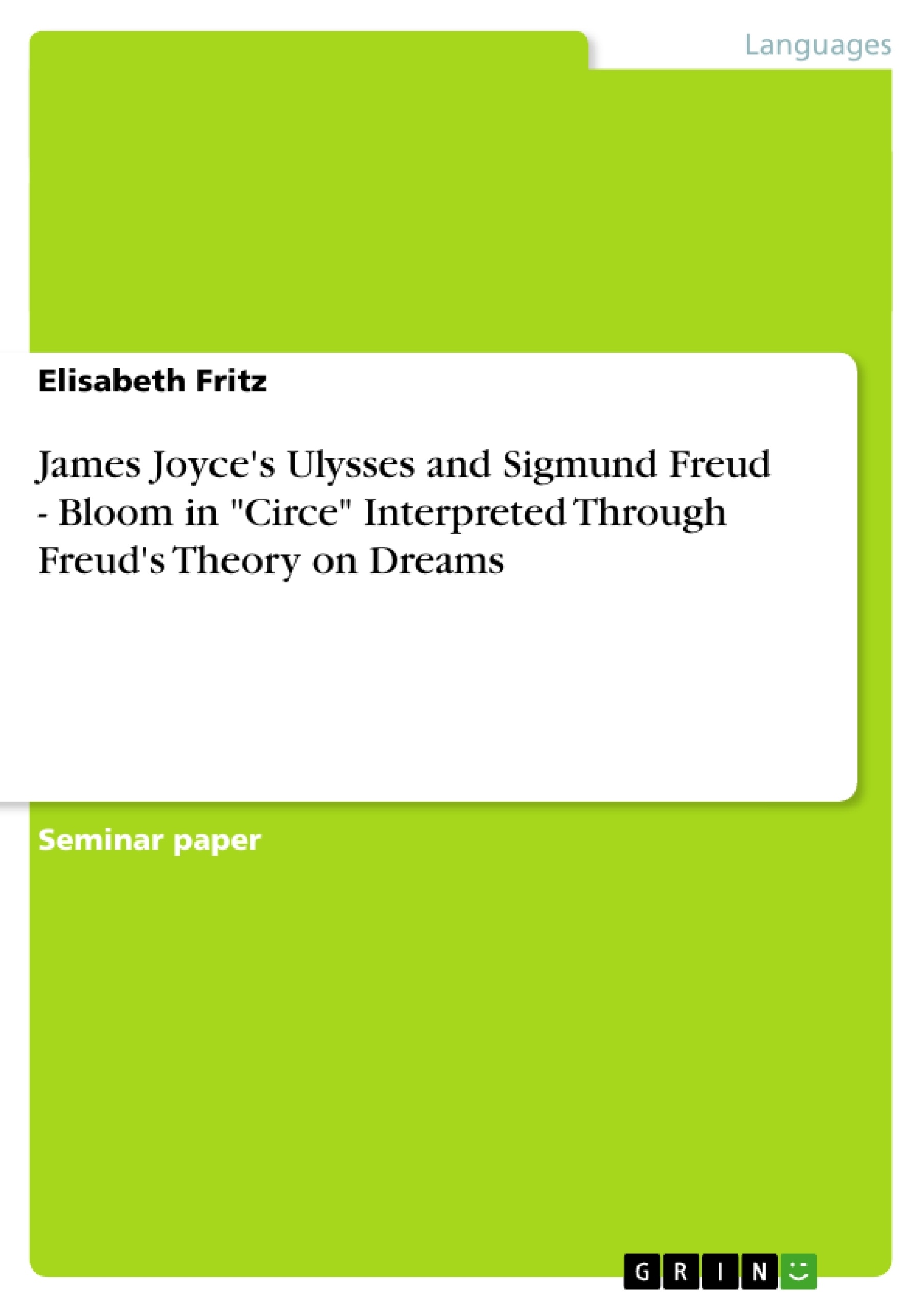This paper analyses the nighttown episode of Joyce's Ulysses through the framework of Freud's psychoanalytic understanding of dreams. Setting of from the assumption that Freud's ground-breaking claims must have found their way into the complex, allusion-laden writing of his contemporary Joyce, it works out elements in the hallucinatory "Circe" chapter that refer to Freud's theory on dreams, concentrating specifically on the portrayal of Bloom.
After an overview of the central aspects of Freud's Interpretation of Dreams, the structure of "Circe" will be introduced, justifying the analogy to dreams and tackling the general problem of applying psychoanalysis to literary criticism. The next chapter will take a closer look at Freud’s idea of regression and enumerate elements that may be considered allusions to this in “Circe”. Building on this, the final chapter will then be an attempt at a psychoanalytic reading of Bloom, also drawing upon some additional ideas from Freud’s later theories.
Inhaltsverzeichnis (Table of Contents)
- Introduction
- Theoretical Framework: Freud's Theory on Dreams
- The Nature of Dreams
- Psychoanalytic Aim and Method
- The Constitution of Dreams
- Wish-fulfilment and the Censor
- Means of the Dream Work
- “Circe” and Psychoanalysis
- “Circe” as a Dream?
- Structure
- Dream Elements in “Circe”
- Regression - Archaic Elements in “Circe”
- Dream Material
- Form
- A Psychoanalytic Reading of Bloom
- Wishes and the Intra-Psychic Agencies
- Dreams and the Nature of Fear
- Repressed Material, the Superego and the Representation of their Battle in the Dream
- Conclusion
Zielsetzung und Themenschwerpunkte (Objectives and Key Themes)
The paper aims to analyze the chapter “Circe” from James Joyce's Ulysses through the lens of Sigmund Freud's theory on dreams, exploring the potential psychoanalytic allusions within this chapter.- The nature of dreams according to Freud and how they function as a psychological process.
- The application of psychoanalysis to literary criticism, particularly in analyzing a fictional narrative like “Circe”.
- The concept of regression in dreams and its manifestation within the chapter “Circe”.
- A psychoanalytic reading of the character Leopold Bloom, focusing on his wishes, fears, and repressed material.
- The role of dreams in representing the conflict between the ego, superego, and id within the psyche.
Zusammenfassung der Kapitel (Chapter Summaries)
- Introduction: This chapter introduces the topic by outlining the emergence of psychoanalysis in the early 20th century, emphasizing its impact on Western society. It then situates Ulysses within this context, suggesting potential psychoanalytic influences within Joyce's work, particularly in the chapter “Circe”. The chapter asserts that Joyce's knowledge of Freud and his interest in dreams make it plausible that he consciously incorporated psychoanalytic elements into his writing. It outlines the structure of the paper, emphasizing the focus on a psychoanalytic reading of Bloom rather than a biographical interpretation of Joyce.
- Theoretical Framework: Freud's Theory on Dreams: This section delves into Freud's theory of dreams, explaining that they are not mere random fantasies but rather the result of the psyche processing memories and preoccupations. It identifies key characteristics of dreams, including their role as a guard of sleep, their processing of various types of stimuli, and the concept of the dream work, which transforms latent dream thoughts into the manifest dream content. The section also emphasizes the egoistic nature of dreams, highlighting their focus on the dreamer’s personal experiences and wishes.
- “Circe” and Psychoanalysis: This chapter analyzes “Circe” as a potential dream sequence, justifying this parallel based on its hallucinatory nature. It examines the challenges of applying psychoanalysis to literary criticism, particularly when interpreting a fictional text. The section also introduces the structure of “Circe” and discusses the dream elements present within the chapter.
- Regression - Archaic Elements in “Circe”: This chapter explores the concept of regression as proposed by Freud, specifically how dreams can tap into primal instincts and childhood experiences. It then identifies elements within “Circe” that potentially allude to this concept, analyzing the dream material and its form in relation to Freud’s theory of regression.
- A Psychoanalytic Reading of Bloom: This chapter presents an interpretation of Bloom’s character through a psychoanalytic lens. It explores Bloom’s wishes and their relationship to the id, ego, and superego. It delves into the nature of fear in dreams and how they may manifest within the narrative. Finally, it analyzes the representation of repressed material and the inner conflict between the superego and the id within the dream sequence of “Circe”.
Schlüsselwörter (Keywords)
The main keywords and focus topics of this paper include psychoanalysis, Sigmund Freud, James Joyce, Ulysses, the chapter “Circe”, dreams, the dream work, wish-fulfillment, repression, regression, the id, the ego, the superego, and Leopold Bloom. The paper explores how these concepts intersect and influence each other within the context of Joyce's novel, particularly in the hallucinatory narrative of “Circe”.- Quote paper
- Elisabeth Fritz (Author), 2008, James Joyce's Ulysses and Sigmund Freud - Bloom in "Circe" Interpreted Through Freud's Theory on Dreams, Munich, GRIN Verlag, https://www.grin.com/document/130737




